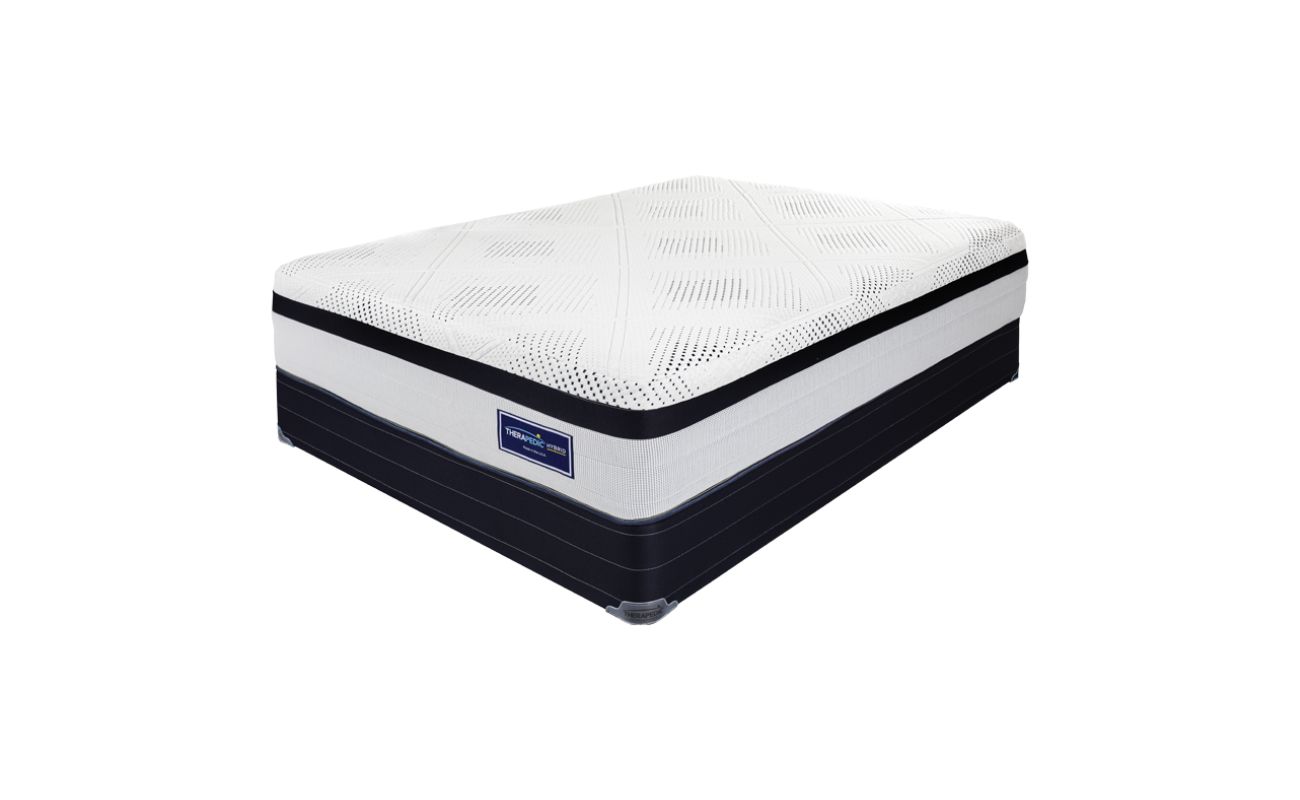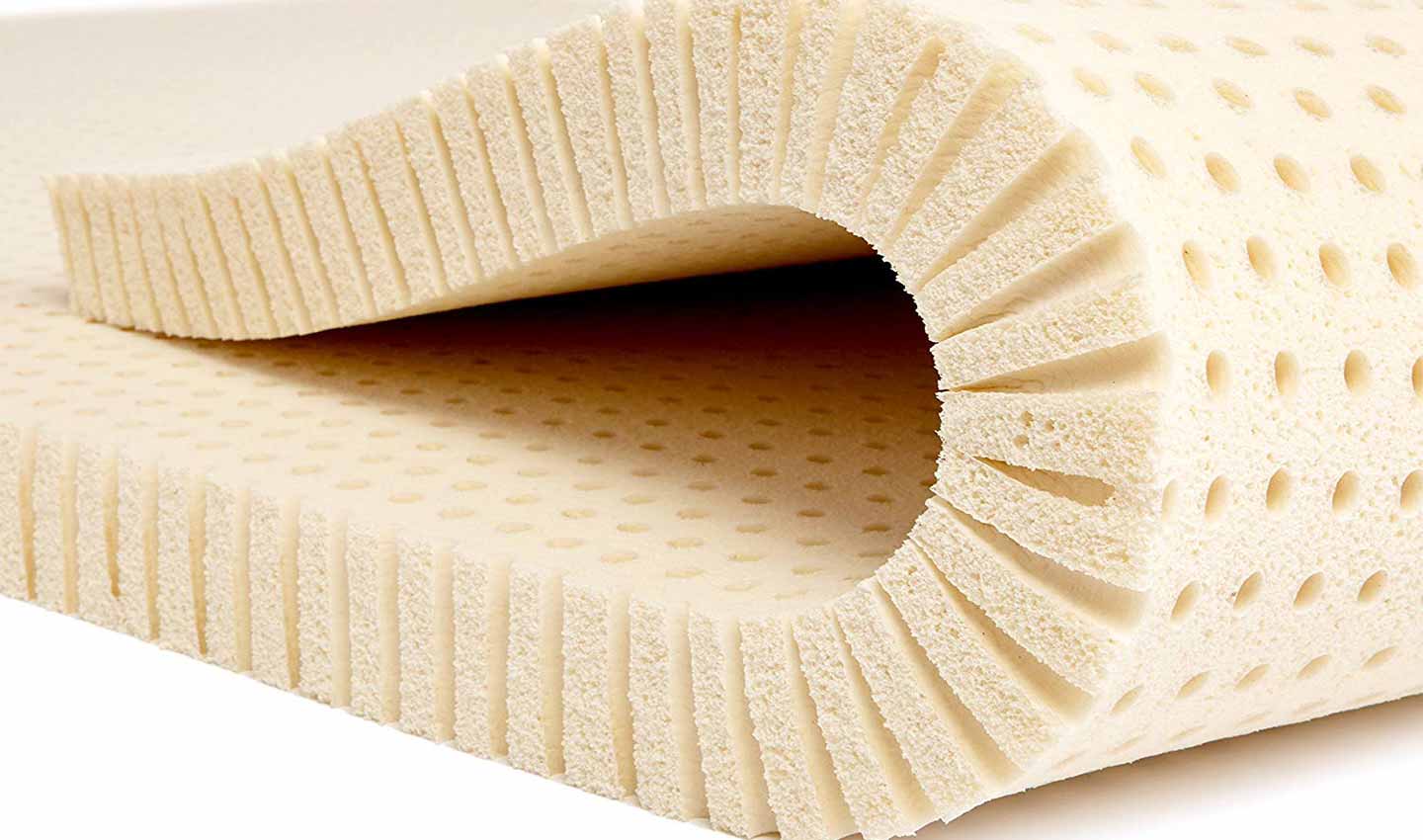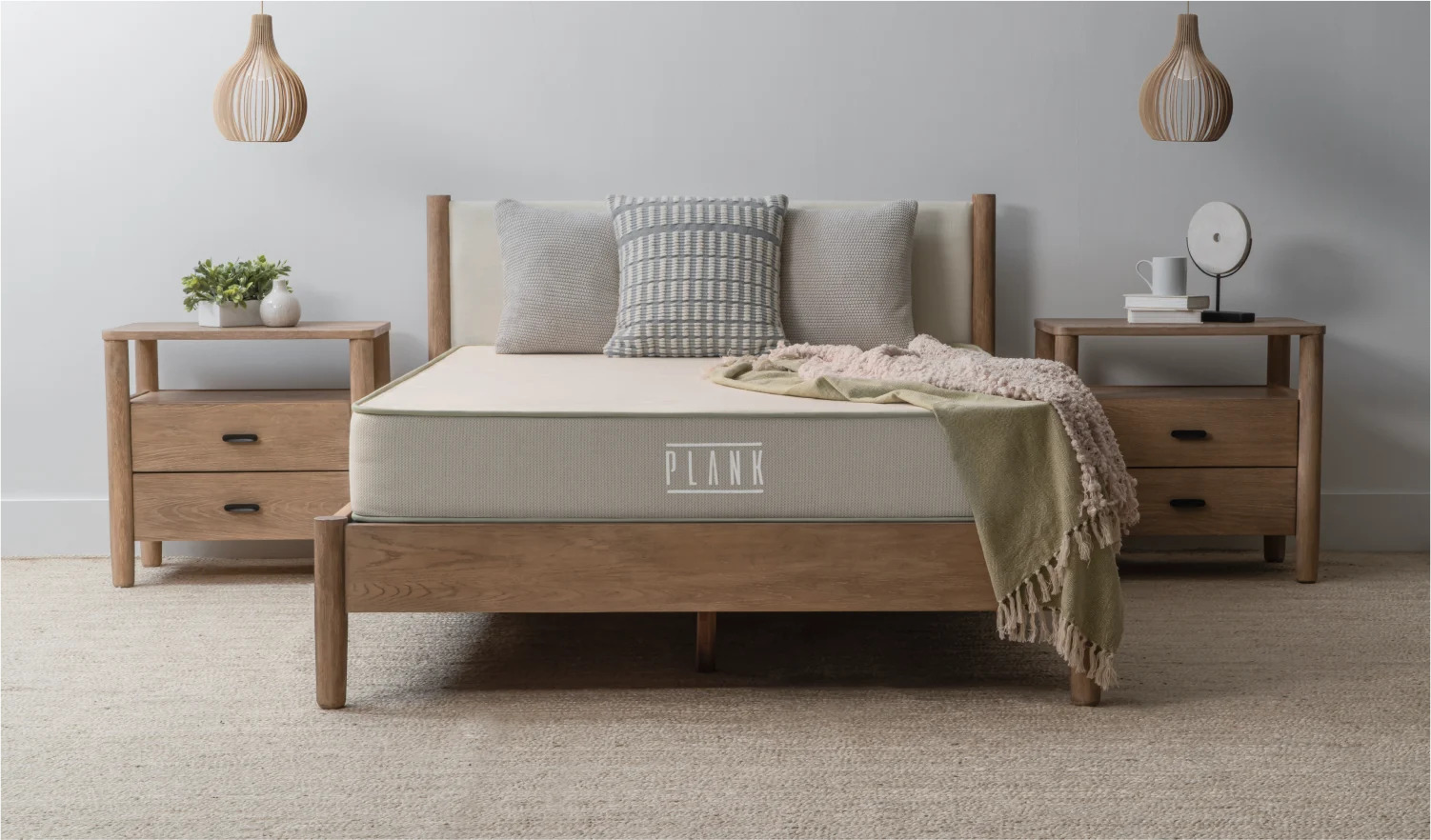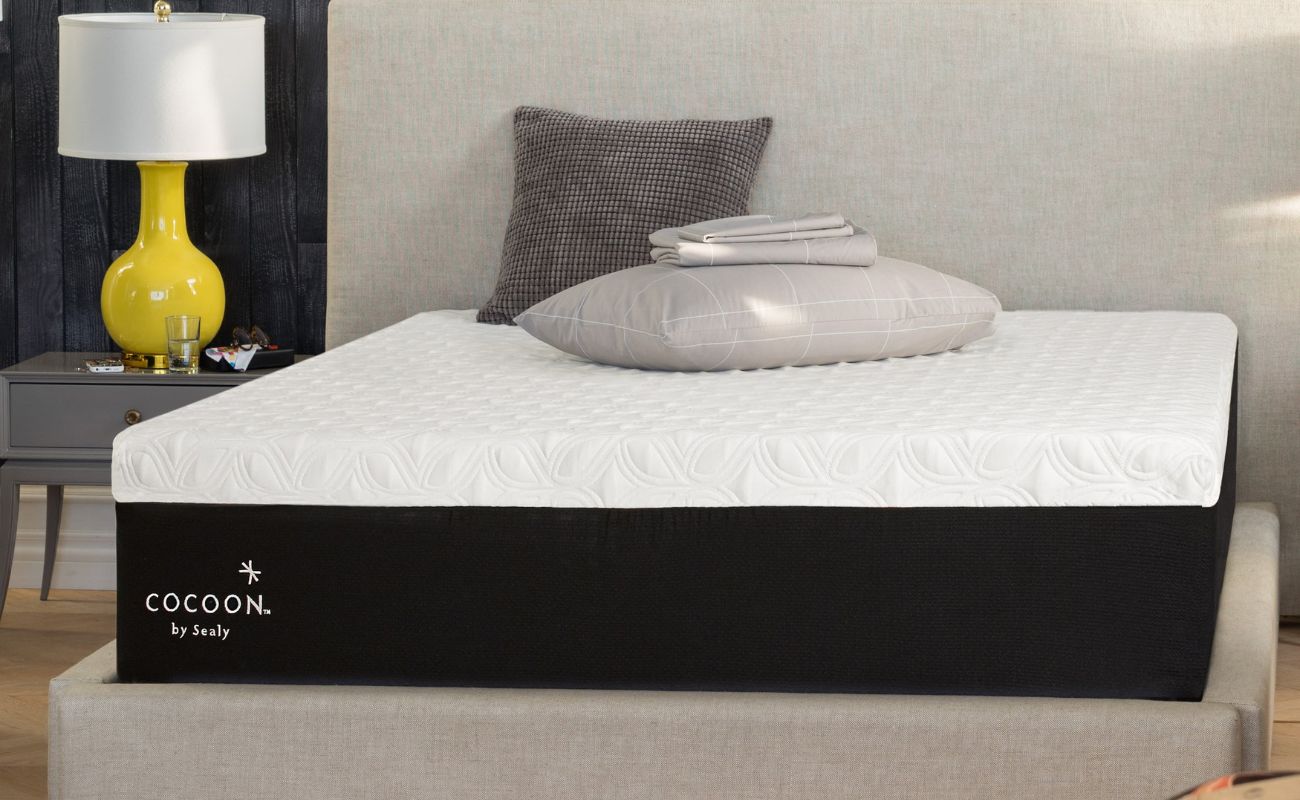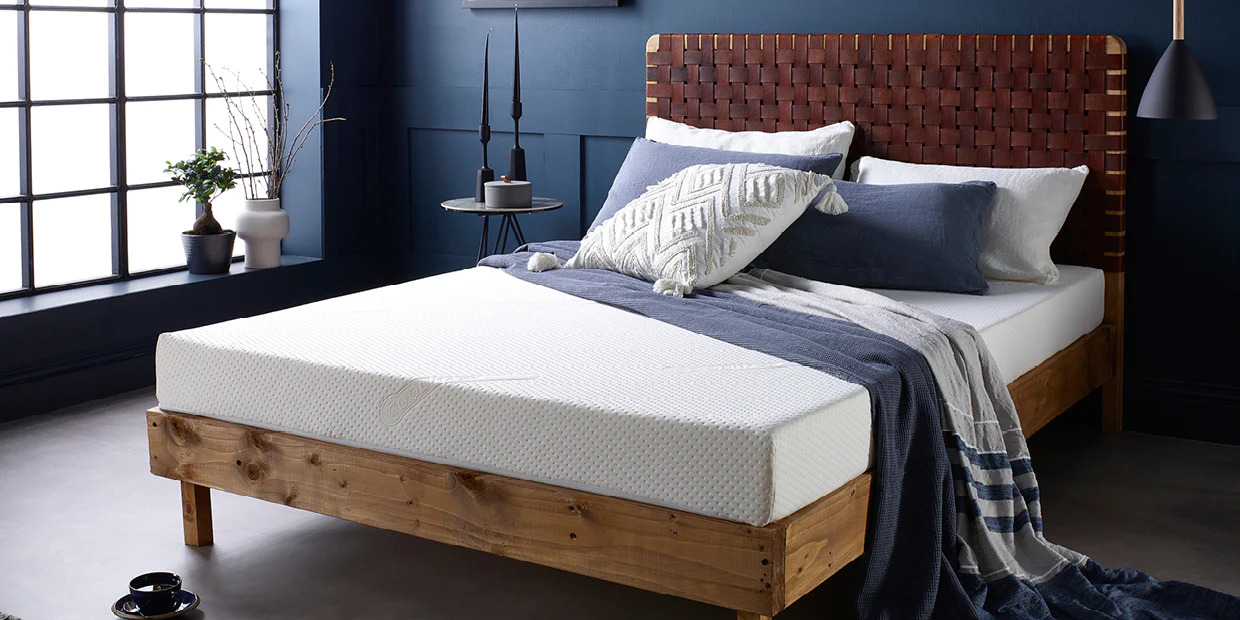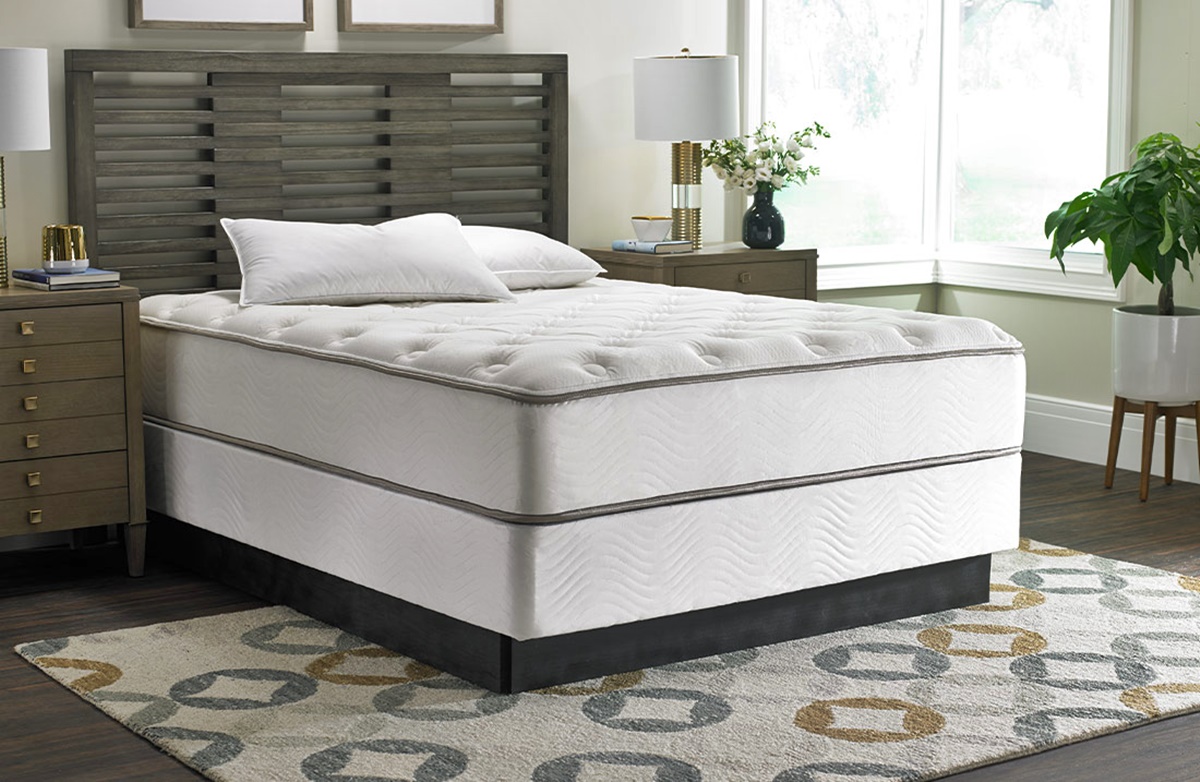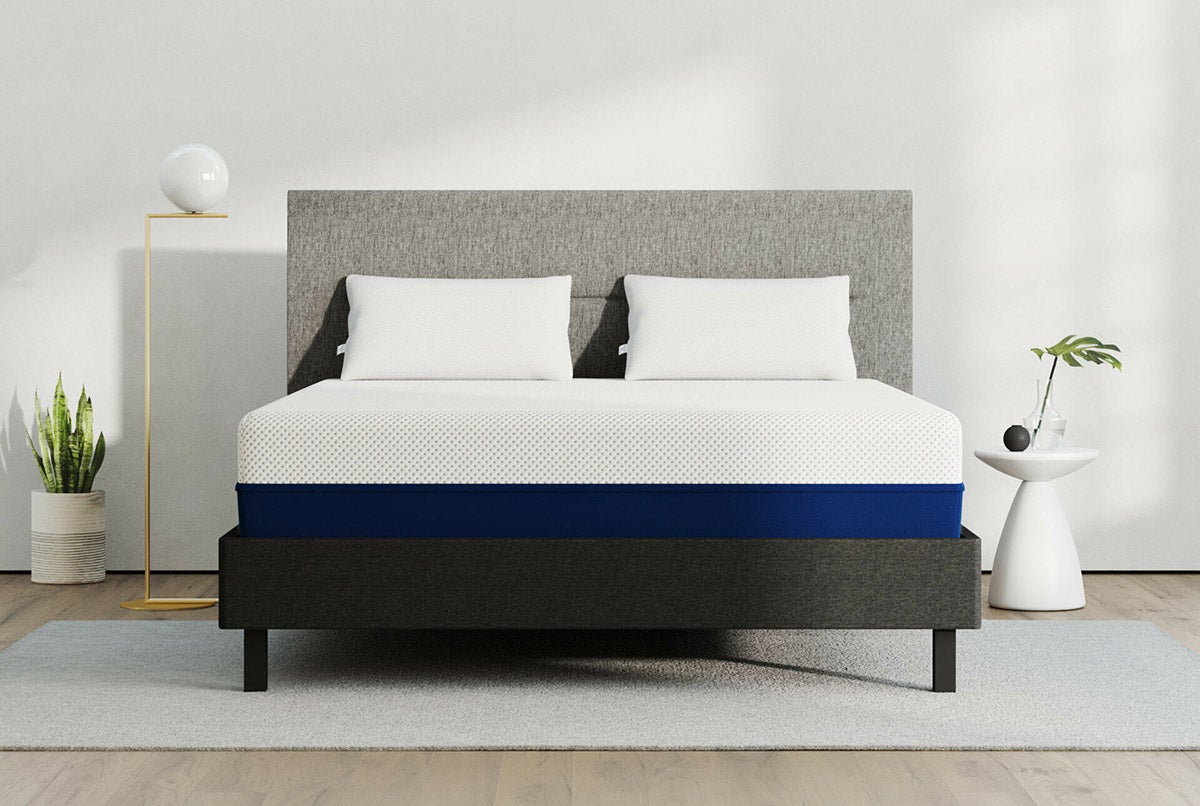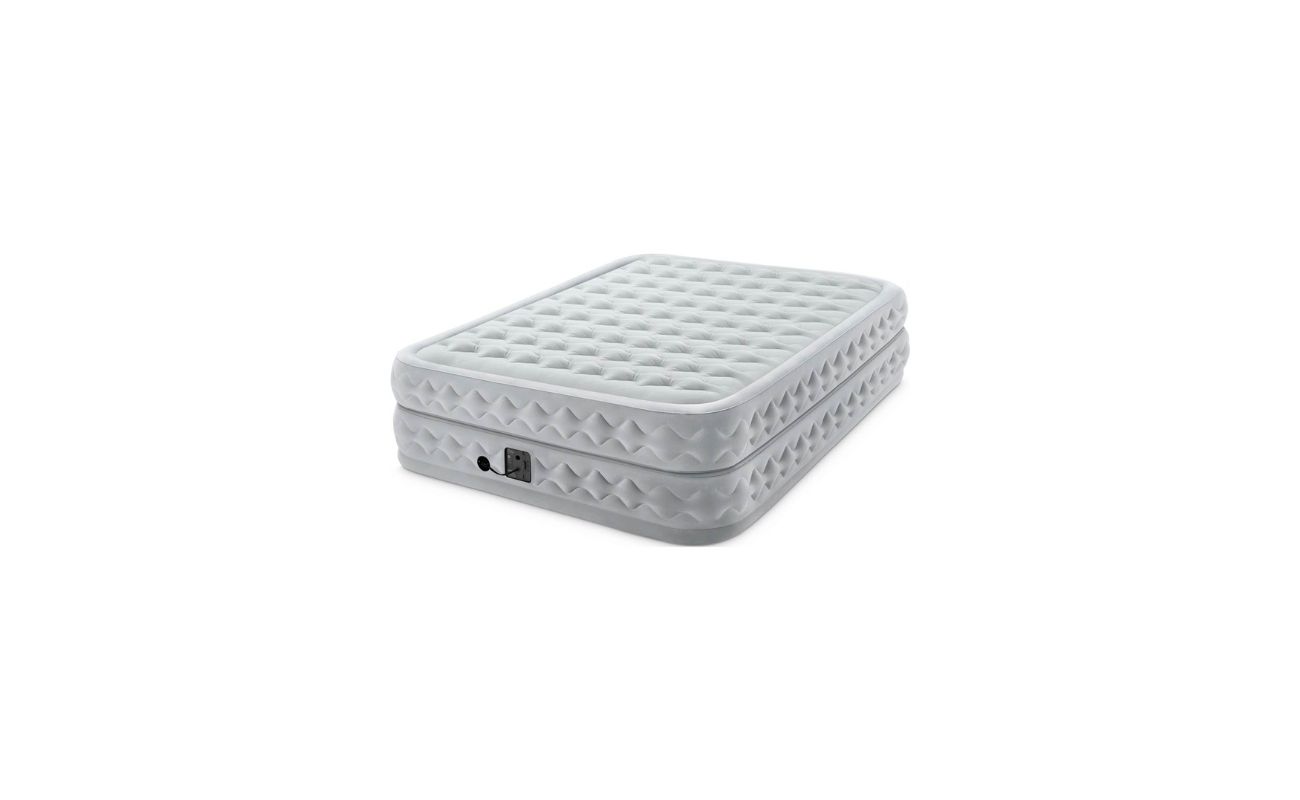Home>Furniture>Bedroom Furniture>How To Buy Mattress


Bedroom Furniture
How To Buy Mattress
Modified: January 9, 2024
Looking to buy a mattress? Learn how to choose the perfect one for your bedroom with our comprehensive guide on buying bedroom furniture.
(Many of the links in this article redirect to a specific reviewed product. Your purchase of these products through affiliate links helps to generate commission for Storables.com, at no extra cost. Learn more)
Introduction
When it comes to creating a comfortable and inviting bedroom, choosing the right mattress is essential. After all, the quality of your sleep can greatly impact your overall well-being. With the wide variety of options available in the market, buying a mattress can seem like a daunting task. However, with a little research and guidance, you can make an informed decision that suits your needs and preferences.
In this article, we will walk you through the steps to buying a mattress that will help you achieve a restful night’s sleep. From determining the right size to considering your budget and testing out different options, we will cover everything you need to know to make the best choice. So, let’s get started!
Note: Before starting your mattress buying journey, it is important to assess your current sleeping habits and any specific issues you may have, such as back pain or allergies. Consulting with a healthcare professional can provide valuable insights and advice.
Key Takeaways:
- Choosing the right mattress involves considering factors such as size, sleeping preferences, budget, and warranty. By following a systematic approach, you can find a mattress that meets your specific needs and promotes restful sleep.
- Testing out mattresses, reading reviews, and comparing prices are crucial steps in the buying process. By gathering information and making an informed decision, you can invest in a high-quality mattress that contributes to your overall well-being.
Read more: How To Buy Mattress Online
Step 1: Determine Your Mattress Size
Before you begin exploring different mattress options, it’s essential to determine the size that will suit your needs. Mattresses come in various sizes, including twin, full, queen, king, and California king. Consider the following factors when selecting the right mattress size:
- Available space: Measure your bedroom and consider the layout to determine the maximum mattress size that will fit comfortably. Ensure that there is enough space to move around and accommodate any additional furniture you may have.
- Sleeping space: Consider your individual sleeping preferences and whether you sleep alone or with a partner. If you enjoy sprawling out or sharing the bed with someone, a larger mattress size like a queen or king might be more suitable.
- Future needs: If you anticipate any changes in your living situation, such as moving in with a partner or upgrading to a larger bedroom, it may be wise to invest in a bigger mattress size to accommodate these future needs.
It’s important to note that mattress sizes can vary slightly between different manufacturers, so double-check the exact dimensions before making a purchase. Once you have determined the appropriate mattress size, you can move on to exploring the various mattress types.
Step 2: Understand Your Sleeping Preferences and Needs
Understanding your sleeping preferences and needs is vital in choosing a mattress that provides the right level of comfort and support. Consider the following factors:
- Sleeping position: Determine whether you primarily sleep on your back, side, stomach, or a combination of these. Different mattress types are better suited to specific sleeping positions.
- Firmness level: Think about whether you prefer a soft, medium, or firm mattress. The ideal firmness level depends on personal preference and factors such as body weight and any existing medical conditions.
- Support needs: Assess whether you need extra support for areas such as the lower back, hips, or shoulders. This can help guide you towards mattresses that provide targeted support in those areas.
- Allergies or sensitivities: If you have allergies or sensitivities to certain materials, it’s essential to choose a hypoallergenic mattress that is resistant to dust mites, mold, and other allergens.
By understanding your sleeping preferences and needs, you can narrow down the options and focus on mattresses that are specifically designed to cater to those requirements. This helps ensure that you find a mattress that provides optimal comfort and promotes healthy sleep.
Step 3: Research Different Types of Mattresses
Now that you have a clear understanding of your mattress size and sleeping preferences, it’s time to explore the various types of mattresses available in the market. Each type has its own unique characteristics and benefits. Some common types of mattresses include:
- Innerspring: These mattresses contain a system of coils or springs that provide support and bounce. They are generally more affordable and offer good airflow, but may not provide as much contouring or pressure relief as other types.
- Memory Foam: Memory foam mattresses are known for their contouring ability, as they respond to the body’s shape and heat. They offer excellent pressure relief and motion isolation, making them well-suited for those who prefer a cozy and enveloping feel.
- Latex: Latex mattresses are made from natural or synthetic latex foam. They offer a responsive and supportive feel, along with good durability and temperature regulation. Latex is also resistant to dust mites and mold, making it a great option for allergy sufferers.
- Hybrid: Hybrid mattresses combine the benefits of innerspring and foam or latex. They usually feature a pocketed coil system for support and layers of foam or latex for comfort. Hybrid mattresses offer a balance of support, pressure relief, and breathability.
- Pillow-top: Pillow-top mattresses have an additional layer of soft padding sewn onto the top surface, offering enhanced cushioning and plushness. They can be found in various mattress types, providing extra comfort for those who prefer a softer feel.
Take the time to research and understand the pros and cons of each mattress type. Consider factors such as durability, motion isolation, temperature regulation, and overall comfort. This will help you make an informed decision and choose the type of mattress that aligns with your preferences and requirements.
Step 4: Consider Your Budget
When buying a mattress, it’s important to establish a budget that you are comfortable with. Mattress prices can vary significantly based on factors such as size, type, brand, and additional features. Here are some tips to consider when budgeting for a mattress:
- Set a realistic range: Determine the maximum amount you are willing to spend on a mattress. This will help you narrow down your options and focus on mattresses within your price range.
- Research price points: Explore different retailers and online platforms to get a sense of the average prices for mattresses of your desired type and size. This will give you an idea of what to expect and prevent you from overspending or settling for a lower quality mattress.
- Consider long-term investment: Keep in mind that a mattress is an investment in your sleep and overall well-being. While it’s important to stick to your budget, remember that a good-quality mattress can provide you with years of comfortable and restorative sleep.
- Look for promotions and discounts: Keep an eye out for sales, promotions, and discounts offered by retailers. Many stores offer holiday deals, clearance sales, or bundle packages that can help you save money while still getting a high-quality mattress.
By considering your budget and researching prices, you can make an informed decision that balances your financial constraints with your desire for a high-quality mattress.
Read more: Where To Buy Used Mattress
Step 5: Test and Try Out Mattresses
One of the most important steps in the mattress buying process is to test and try out different options. While online research can provide valuable insights, nothing compares to physically experiencing how a mattress feels. Follow these tips when trying out mattresses:
- Visit mattress stores: Take the time to visit multiple mattress stores in person, as this will allow you to explore a wide range of options and feel the mattresses for yourself.
- Lie down in different positions: Spend at least 10-15 minutes lying down on each mattress you are considering. Test it out in various sleeping positions to gauge its comfort and support levels.
- Pay attention to body alignment: Assess how the mattress supports your body. Ideally, it should keep your spine aligned, with no excessive pressure on any specific areas.
- Consider motion transfer: If you share your bed with a partner, check the mattress’s motion isolation capabilities. A good mattress should minimize motion transfer, allowing you to sleep undisturbed even if your partner moves.
- Don’t rush: Take your time when testing mattresses and don’t feel pressured to make a decision quickly. Remember, you’ll be spending a significant amount of time on your new mattress, so it’s essential to find one that feels right for you.
Keep in mind that comfort is subjective, and what works for one person may not work for another. Trust your instincts and focus on finding a mattress that provides the level of comfort and support you desire.
When buying a mattress, consider factors such as your preferred firmness, sleeping position, and any specific health concerns. It’s also important to test the mattress in person before making a purchase.
Step 6: Read Reviews and Gather Feedback
Once you have identified a few mattresses that you find comfortable during your in-store testing, it’s time to gather more information by reading reviews and gathering feedback from others. Here’s how:
- Read online reviews: Look for reputable websites and platforms that provide customer reviews and ratings for mattresses. Pay attention to both the positive and negative aspects mentioned by customers to gain a comprehensive understanding of each mattress’s pros and cons.
- Consider professional reviews: In addition to customer reviews, it can be helpful to read reviews from experts and professionals in the industry. They often provide in-depth analysis and comparisons based on factors such as construction, materials, comfort, and durability.
- Seek recommendations: Reach out to friends, family, or colleagues who have recently purchased a mattress. Ask about their experiences, including any challenges or positive aspects they encountered with their chosen mattresses.
- Research brand reputation: Investigate the reputation and track record of the mattress brands you are considering. Look for brands with a history of producing high-quality mattresses and excellent customer service.
- Consider specific needs: If you have specific requirements, such as needing a mattress for back pain or allergies, search for reviews and feedback from individuals with similar needs. This can provide valuable insights into whether a particular mattress is suitable for you.
By reading reviews and gathering feedback, you can gain a broader perspective on the comfort, durability, and overall quality of the mattresses you are considering. This information will help you make a more informed decision and increase the likelihood of choosing a mattress that meets your expectations.
Step 7: Compare Prices and Retailers
Once you have narrowed down your choices based on your research, it’s time to compare prices and retailers to ensure you are getting the best value for your money. Here’s how to go about it:
- Explore multiple retailers: Visit different retailers, both in-store and online, to compare prices and availability. Be sure to check both the manufacturer’s website and authorized retailers to find the best deals.
- Note promotions and discounts: Keep an eye out for any ongoing promotions, discounts, or sales events that can help you maximize your savings. Look for bundle packages that may include bedding or mattress accessories.
- Consider warranty and return policies: Pay attention to the warranty and return policies offered by different retailers. A comprehensive warranty can provide you with added peace of mind, while a flexible return policy ensures you can make changes if you are not fully satisfied with your purchase.
- Compare prices: Create a list of the mattresses you are interested in and compare their prices across different retailers. Take note of any additional costs, such as delivery fees or mattress removal charges, as these can affect the overall cost.
- Read customer reviews of retailers: In addition to researching mattresses, take the time to read customer reviews and feedback about the retailers themselves. Look for reviews about their customer service, delivery process, and overall shopping experience.
By comparing prices and retailers, you can ensure that you are getting the best possible deal on the mattress of your choice. Remember, while price is an important factor, it should not be the sole deciding factor. The reputation of the retailer and the quality of their customer service should also be taken into consideration.
Step 8: Check for Warranty and Return Policy
Before making your final decision, it’s essential to thoroughly check the warranty and return policy offered for the mattress you are interested in. Understanding these policies will give you peace of mind and protection in case any issues arise after your purchase. Here’s what to consider:
- Warranty coverage: Carefully review the details of the warranty provided by the manufacturer. Check the duration of the warranty, as well as what is covered, such as sagging, defects, or damage. Make sure you understand any conditions or limitations that may apply.
- Return policy: Familiarize yourself with the return policy of the retailer. Find out how long you have to return the mattress if you are not satisfied and whether there are any specific requirements or fees involved. Some retailers offer a trial period during which you can test the mattress and return it if it doesn’t meet your expectations.
- Transportation and handling: Inquire about who is responsible for transportation or handling fees in case of a warranty claim or return. Understand if you are required to cover any costs associated with these processes.
- Customer support: Take note of the accessibility and responsiveness of customer support for both the manufacturer and retailer. Having reliable customer service can make a significant difference if you have any concerns or questions about your mattress.
- Documentation: Keep copies of all related documentation, including purchase receipts, warranty certificates, and any communication with the retailer or manufacturer. These will be crucial in case you need to file a warranty claim or return the mattress.
Taking the time to understand the warranty and return policy ensures that you are well-informed about your rights as a consumer and the steps to take in case of any issues. It is always better to be prepared and know your options before making a final purchase decision.
Read more: Why Buy A Mattress Topper
Step 9: Make Your Purchase Decision
After conducting thorough research, testing out mattresses, comparing prices and retailers, and reviewing the warranty and return policies, it’s time to make your purchase decision. Consider the following factors to ensure you make the right choice:
- Comfort and support: Reflect on your personal experience and feedback from others regarding the comfort and support of the mattress. Choose a mattress that aligns with your needs and provides the right level of comfort and support for a restful night’s sleep.
- Budget: Review your budget and ensure that the chosen mattress falls within your desired price range. Keep in mind that investing in a quality mattress is a long-term investment in your sleep and overall well-being.
- Brand reputation: Consider the reputation and track record of the mattress brand. Look for brands known for producing high-quality products and providing excellent customer service.
- Warranty and return policy: Ensure that you fully understand the warranty and return policy provided with the mattress. Make sure you are comfortable with the coverage and any associated terms and conditions.
- Additional features: Take into account any additional features that may be important to you, such as hypoallergenic materials, temperature regulation, or motion isolation.
Once you have carefully considered these factors, trust your instincts and make the purchase decision that feels right for you. Keep in mind that buying a mattress is a personal choice, and what works for one person may not work for another. By following these steps, you can increase the chances of selecting a mattress that meets your needs and provides the comfort and support you desire.
Remember, a good night’s sleep is essential for your overall well-being, so invest the time and effort to find the perfect mattress that will contribute to your quality of life for years to come.
Conclusion
Choosing the right mattress is a crucial decision that can greatly impact the quality of your sleep and overall well-being. By following the steps outlined in this guide, you can navigate the mattress buying process with confidence and find a mattress that meets your needs and preferences.
Start by determining the appropriate mattress size based on your available space and sleeping preferences. Consider factors such as your sleeping position, desired firmness level, and any specific support or allergy needs. This will help you narrow down the options and focus on mattresses that are tailored to your requirements.
Research the different types of mattresses available, including innerspring, memory foam, latex, hybrid, and pillow-top, to understand their unique features and benefits. This knowledge will guide you in making an informed decision based on your desired level of comfort and support.
Establish a budget and compare prices and retailers to ensure you are getting the best value for your money. Take the time to test and try out mattresses in person to get a firsthand experience of their comfort and support. Read reviews and gather feedback from other customers to gain additional insights and perspectives.
Check for warranty and return policies to ensure you are protected in case of any issues with your purchase. It’s important to understand the coverage, conditions, and procedures involved before making a final decision.
Finally, once you have considered all these factors, make your purchase decision with confidence, knowing that you have taken the necessary steps to find a mattress that suits your needs and promotes a restful night’s sleep.
In conclusion, investing in a high-quality mattress is an investment in your well-being. With careful consideration and research, you can find the perfect mattress that provides the comfort, support, and durability you desire for a good night’s sleep.
Frequently Asked Questions about How To Buy Mattress
Was this page helpful?
At Storables.com, we guarantee accurate and reliable information. Our content, validated by Expert Board Contributors, is crafted following stringent Editorial Policies. We're committed to providing you with well-researched, expert-backed insights for all your informational needs.
